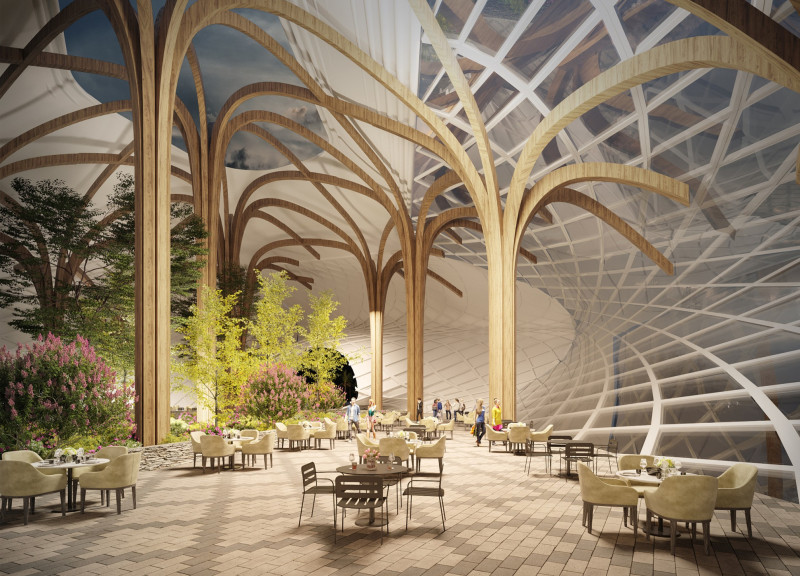5 key facts about this project
The Lava Restaurant is located in a landscape shaped by volcanic activity, a setting that heavily influences its design. The restaurant aims to create a unique dining experience by emphasizing its connection to nature. The concept is built around the properties of chemical molecules, reflecting the way lava transforms its surroundings and the landscapes it creates.
Architecture Concept
The design engages with environmental elements like climate and air. The forms of the building are meant to evoke thoughts about geological history, especially related to mountain terrain. This approach creates a multi-sensory experience, inviting visitors to enjoy not only the food but also the sights, sounds, and feelings of the space.
Functional Layout
The layout of the restaurant is thoughtfully arranged. It features a dining area that can hold up to 100 guests. This space encourages social interaction among diners. A well-designed kitchen supports the food preparation needs, while a multipurpose hall can accommodate various types of events. A greenhouse garden is also part of the design, promoting sustainability and connection to the outdoor environment.
Environmental Integration
The structure takes inspiration from the surrounding geology, particularly the crystalline forms found in volcanic rocks. This understanding helps the building to fit naturally within its environment. The orientation of the restaurant makes use of warm winds to facilitate natural ventilation, which helps reduce energy use and lowers greenhouse gas emissions.
Material Considerations
Although the specific materials are not extensively discussed, there is a focus on organic architectural pigments. This suggests a choice to reflect the colors found in the surrounding landscape. By paying attention to the materials used, the building strengthens its connection to the environment. The strategic placement of sunroofs allows more natural light and air into the dining space, enhancing the overall atmosphere.
The design culminates in a lively architectural form, where both light and the surrounding landscape become part of the dining experience.





















































